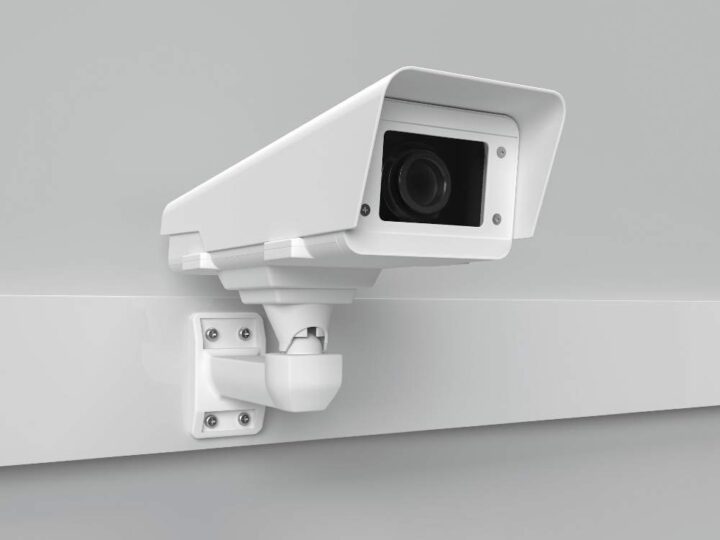Improving Security in Correctional Facilities with Advanced Video Surveillance
How safe is your correctional facility? It’s not something you want to question when you’re responsible for the well-being of inmates, staff, and the general public. Ensuring security within these walls is no easy task, but technology has become an indispensable ally in this fight.
With the rise of advanced video surveillance systems, correctional facilities have been able to drastically improve their security measures, and keep things under control more effectively.

But what exactly makes these systems so effective? And why should your facility consider investing in one? Let’s explore how modern video surveillance can tighten security, reduce risks, and create a safer environment for everyone involved.
Why Traditional Security Measures Fall Short
For years, correctional facilities relied on guards, basic CCTV cameras, and alarm systems to keep things in check. While those measures have worked to some extent, they come with their limitations:
Limited coverage
Traditional surveillance systems may not cover every inch of a facility. Blind spots in important areas can make it easier for contraband exchanges or violent incidents to occur without being detected.
Delayed response times
Human monitoring often means that suspicious behavior is identified after the fact. By then, damage might already be done, or inmates might have already found ways to evade capture.
Overburdened staff
Correctional officers already have demanding workloads. Asking them to constantly monitor video feeds can lead to fatigue and missed incidents.
These limitations highlight the need for better, more proactive tools. That’s where advanced video surveillance comes into play.
The Evolution of Video Surveillance Technology
Today’s video surveillance in correctional facilities goes far beyond the outdated, grainy footage of yesterday. Advanced systems now offer a range of features that make them more reliable, accurate, and effective for ensuring security in correctional environments.
Here are some of the key advancements in video surveillance technology:
- High-definition (HD) cameras – With HD technology, cameras now capture much clearer images. You can easily identify individuals, track movements, and review footage without straining your eyes to make out what’s happening.
- 360-degree coverage – Modern cameras can now offer complete 360-degree coverage, eliminating blind spots. This is especially useful in hallways, recreation areas, and other open spaces where incidents are more likely to occur.
- AI-powered analytics – Artificial intelligence has revolutionized video surveillance. Systems can now use AI to detect unusual activity, identify specific individuals, and even recognize objects like weapons or contraband, providing immediate alerts to security teams.
- Real-time monitoring – Some systems enable live monitoring, which means guards and staff can respond to incidents as they unfold, preventing issues before they escalate.
- Cloud storage – Storing data securely is a major concern for correctional facilities. Cloud storage solutions offer a more efficient way to store large volumes of video footage, allowing you to access it whenever needed without worrying about physical servers breaking down.
Benefits of Advanced Video Surveillance in Correctional Facilities
By upgrading to modern video surveillance, correctional facilities can experience a wide range of benefits. Let’s break down the top ways these systems contribute to better security and overall operations.
1. Improved Inmate and Staff Safety
With better coverage and AI-driven analytics, potential threats are identified early. Whether it’s an altercation between inmates or a contraband drop-off, security staff can step in immediately, preventing harm or stopping the incident from spreading. This leads to a safer environment for both inmates and staff members.
2. Reduced Contraband Smuggling
Contraband remains one of the biggest issues in correctional facilities. Everything from drugs to weapons can find their way inside. Modern surveillance systems with AI can monitor common drop points and alert staff to suspicious packages or behaviors. This significantly cuts down on contraband exchanges.
3. Enhanced Monitoring in High-Risk Areas
Every correctional facility has its high-risk zones, like recreation yards, intake areas, or specific cell blocks. Advanced surveillance allows for closer monitoring of these areas, helping to prevent riots, escape attempts, or other dangerous incidents.
4. Better Evidence Collection
When an incident does occur, having crystal-clear video footage is essential for investigations. Advanced video surveillance provides the kind of high-quality evidence that holds up in internal reviews or court proceedings. This helps ensure that justice is served, whether it’s within the facility or in external legal matters.
5. Decreased Staffing Requirements
With AI and 24/7 monitoring in place, correctional facilities can reduce the burden on their human staff. Instead of manually watching video feeds for hours, guards can focus on other duties while the surveillance system takes over the bulk of the monitoring work. This frees up resources and ensures fewer errors due to human fatigue.
How to Implement Advanced Video Surveillance
Investing in a new video surveillance system may seem like a daunting task, but the benefits far outweigh the challenges. Here are a few steps to consider when planning to upgrade:
- Evaluate your facility’s current needs – Before jumping into new technology, assess where your facility currently stands. What areas are the most vulnerable? Where have past incidents occurred? This will help you determine the best places to deploy advanced surveillance systems.
- Choose the right system – Not all surveillance systems are created equal. Make sure the one you invest in is tailored to correctional facilities, offering features like AI-powered analytics, real-time monitoring, and cloud storage.
- Train your staff – No matter how advanced the technology is, it’s only as effective as the people using it. Ensure your security teams are fully trained to operate the system and understand how to act on alerts generated by AI analytics.
- Regularly maintain and update the system – Like any technology, surveillance systems require regular updates and maintenance. Keep your system in good working condition by performing routine checks and updates to ensure you’re always running the latest security software.
Final Thoughts
Advanced video surveillance is no longer a luxury in correctional facilities – it’s a necessity. The technology now available can drastically improve inmate and staff safety, reduce contraband issues, and enhance overall security. If you’re looking to tighten control within your facility, upgrading your video surveillance system is a smart move that can save time, resources, and, ultimately, lives.


